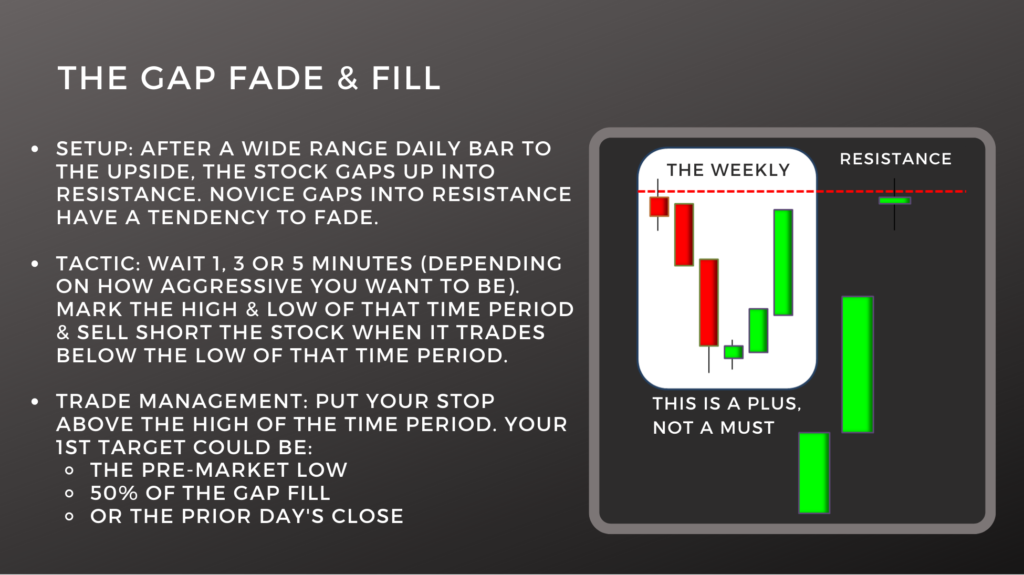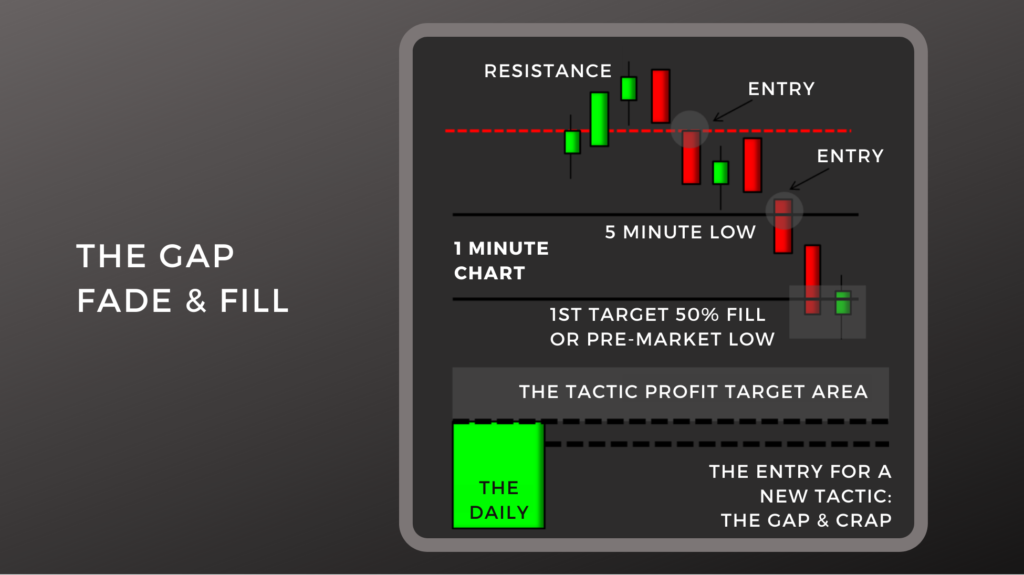Gaps and gap trading setups are some of the most reliable and predictable trading setups found in short-term trading. These setups are predictable because you know exactly when they’re going to happen each day; right on the open or shortly thereafter. They occur most often during earnings season because they coincide with the day a company will declare its earnings. Traders might not know which way the stock is going to gap, but we do know that there’s going to be a gap generated by the earnings results. The pattern itself is created on the daily chart, but the trading opportunity is intraday. On some occasions, this can grow into a swing trade, meaning some gap trades may have up to 10 days of follow-through.
What Is Gapping?
Gapping occurs when the price of a stock, or another asset, opens above or below the previous day’s close with no trading activity in between. A gap is the area discontinuity in a security’s price chart. Gaps may materialize when headlines cause market fundamentals to change rapidly during hours when markets are typically closed; for instance, the result of an earnings call after-hours. (Mitchell, 2022)
Gaps are created when there is an imbalance in buying and selling pressure in a stock in the pre and post-market. These imbalances are created by differences in access by various market participants; most specifically between professionals/institutions and novices/retail investors.
The Gap Fade and Fill Set up
The Theory Behind The Trading Concept
The gap fade and fill works best when the stock you’re looking to trade has been rallying up to an area of weekly resistance as shown on the inside in the example above. This is a plus not a must, meaning gap fade and fills occur on a regular basis even without weekly resistance and the setup is still viable. The setup on the daily chart is simple: the trader must stock up for 1 to 2 days and for those days to be green wide range bars; 1 big bar up is still acceptable. The green wide range bar/s indicate lots of people are going long and that there is a lot of buying pressure driving the price higher. To understand this concept further, please refer to our previous blog about types of gaps.
Once the market opens, professionals fill the orders of the retail investors from their inventory that they had accumulated over the past two days. Once the artificially inflated stock opens, traders scramble to get out and professionals scramble to fill orders from retail investors at these artificially inflated levels. Therefore, the novice gap quickly fades. The stock price quickly returns back to the price level established at the close of the prior day.
The Trading Tactic
Traders should wait and use a time-based entry in order to enter the gap up after a novice gap into resistance. Traders can choose to be aggressive by waiting less time or more conservative by giving the trade more time. Typically, traders wait 1, 3, or 5 minutes. They mark off the high and the low of that time, then they wait for price to cross these lines in order to trigger their entry.
- In the example above, we see the daily bar from the prior day as a large green square and see the stock gapping up into weekly resistance. The small red and green candles are one-minute intraday bars. The stock trades up the first three bars then reverses and quickly sells off dropping below the newly established five-minute low. This also illustrates a tighter than technical entry setup and reversal bar established on the fourth one-minute candle. This is a more aggressive entry technique. The target for the trade is the 50% mark of the gap. The pre-market low or to hold the trade until the gap is completely filled.
Works Cited
Mitchell, C. (2022, February 9). What is Gapping? Investopedia. Retrieved June 2, 2022, from https://www.investopedia.com/terms/g/gapping.asp
Written by Michael DiGioia, Director of Education
Mike is available for One-on-One Coaching. Learn More






